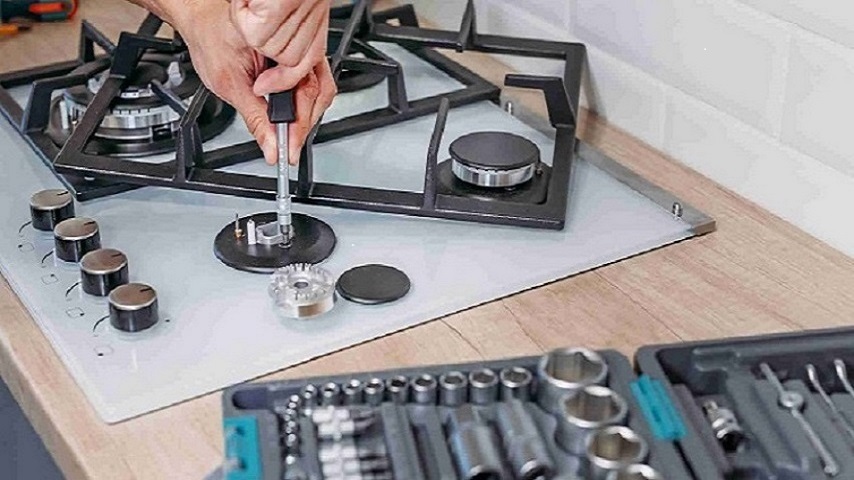Electric stoves are a staple in modern kitchens, providing an efficient and reliable means of cooking. However, like all appliances, they can encounter problems over time. When your electric stove stops working, it can disrupt your daily routine. Instead of rushing to buy a new one or calling a repair service immediately, you might be able to diagnose and fix the issue yourself. This article will guide you through electric stove repair and how to repair them.
Understanding How Electric Stoves Work
Before diving into the repair process, it’s essential to understand how electric stoves operate. Electric stoves use heating elements, which convert electrical energy into heat. These elements are typically made of metal coils, and the heat generated is then transferred to the cookware.
Electric stoves have several components that work together to ensure proper functioning:
- Heating Elements: The metal coils that produce heat.
- Thermostat: Controls the temperature by regulating the electrical current to the heating elements.
- Control Knobs: Allow users to adjust the heat settings.
- Fuses: Protect the stove from electrical overloads.
- Power Supply: Provides the necessary electrical current to the stove.
Understanding these components can help you pinpoint the source of the problem when your stove malfunctions.
Common Electric Stove Problems and How to Fix Them
1. Burner Won’t Heat Up
One of the most common issues with electric stoves is a burner that won’t heat up. This problem can be caused by several factors:
- Faulty Burner: If one burner isn’t working, it may be due to a faulty heating element. You can test this by swapping the faulty burner with a working one. If the working burner doesn’t heat up when placed in the faulty one’s position, the problem is likely with the socket or wiring.
- Damaged Socket: If the burner swap indicates the socket is the problem, you may need to replace it. This involves turning off the power, removing the faulty socket, and installing a new one.
- Burnt-Out Fuse: If multiple burners are not heating, a fuse may have blown. Check your stove’s manual to locate the fuse box and replace any burnt-out fuses.
2. Inconsistent Heating
If your stove’s burners heat unevenly, the problem could lie with the thermostat or the heating elements:
- Thermostat Issues: A malfunctioning thermostat can cause inconsistent heating. You can test the thermostat with a multimeter to check for continuity. If it’s faulty, replacing it should resolve the issue.
- Worn-Out Heating Elements: Over time, heating elements can wear out, leading to uneven heating. If you notice that certain areas of the burner are hotter than others, it may be time to replace the element.
3. Stove Won’t Turn On
If your electric stove won’t turn on at all, there could be a problem with the power supply or internal wiring:
- Check the Power Supply: Ensure the stove is plugged in and that the outlet is functioning correctly. You can test the outlet with another appliance to see if it’s delivering power.
- Inspect the Wiring: If the power supply is intact, the issue may lie within the stove’s internal wiring. This can be a more complex problem to fix and may require professional assistance. However, you can start by checking for visible damage to the wiring, such as fraying or burning.
4. Control Knobs Not Working
Control knobs that don’t adjust the temperature correctly can be frustrating. This issue is often caused by worn-out or damaged knobs:
- Replace the Knobs: If the knobs are loose or cracked, they may not be able to grip the control shaft properly. Replacing the knobs is a simple fix that can restore functionality.
- Inspect the Control Shaft: If replacing the knobs doesn’t solve the problem, the control shaft itself may be damaged. You can check this by removing the knob and inspecting the shaft for wear and tear. If it’s damaged, the entire control unit may need to be replaced.
5. Oven Won’t Heat
If the oven portion of your electric stove isn’t heating, the issue could be with the bake or broil elements, the thermostat, or the control board:
- Test the Bake and Broil Elements: Use a multimeter to test for continuity. If either element is faulty, replace it.
- Check the Thermostat and Control Board: If the elements are functioning correctly, the problem may be with the thermostat or control board. Both components can be tested with a multimeter, but replacing the control board can be complex and may require professional help.
Safety Tips for Electric Stove Repair
Working with electrical appliances can be dangerous, so it’s essential to take safety precautions:
- Always Unplug the Stove: Before performing any repairs, ensure the stove is unplugged from the power source.
- Use the Right Tools: Using the correct tools for the job can prevent accidents and ensure a proper repair.
- Know When to Call a Professional: Some issues, especially those involving complex wiring or control boards, may require professional assistance. If you’re unsure, it’s better to seek help than risk injury.
Conclusion
Electric stove repair can seem daunting, but many common issues can be resolved with a little knowledge and the right tools. By understanding the basics of how your stove works and following the troubleshooting steps outlined in this guide, you can save time and money by fixing problems yourself. However, always prioritize safety, and don’t hesitate to call a professional if a repair is beyond your skill level.



